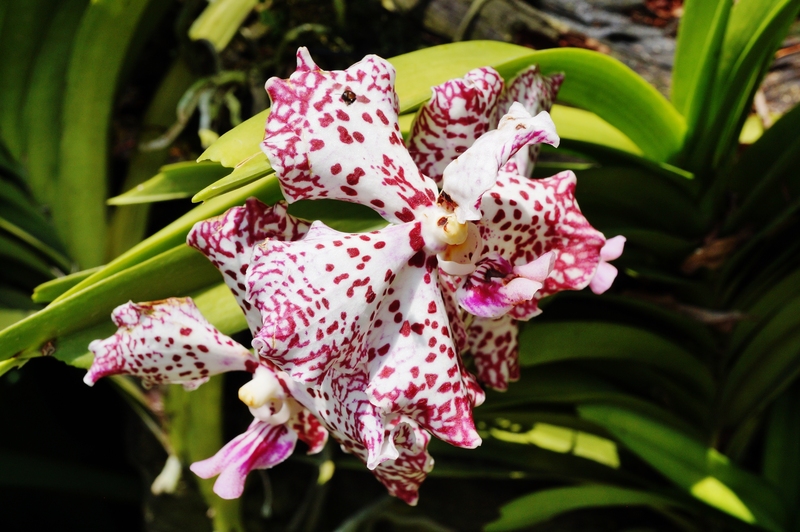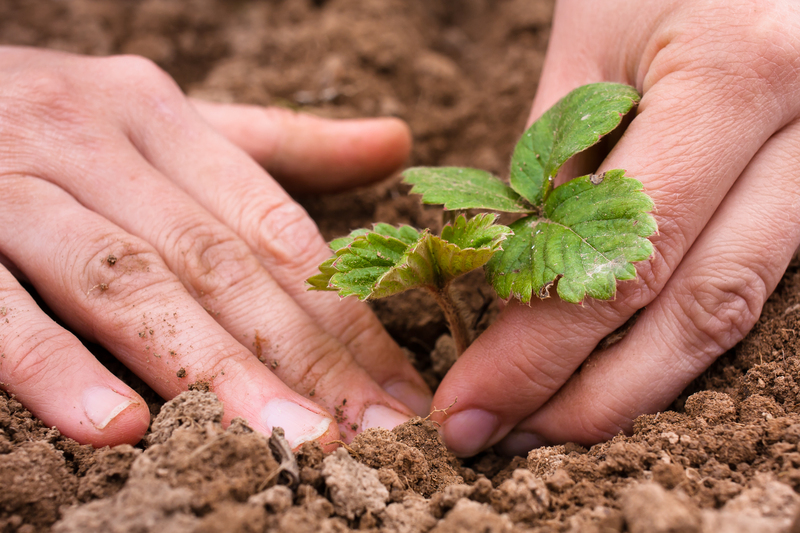Gardening Tips for Kid-Friendly Outdoor Spaces
Posted on 21/06/2025
Gardening Tips for Kid-Friendly Outdoor Spaces
Creating kid-friendly outdoor spaces is a wonderful way to encourage children to learn, play, and connect with nature. Gardening isn't just for adults; it can be a valuable activity for children, teaching them about the environment, patience, and responsibility. In this comprehensive guide, we'll share essential gardening tips to design a safe, engaging, and fun garden that inspires young green thumbs.
Why Kid-Friendly Gardening Matters
A child-friendly garden offers countless benefits. From promoting a love for the outdoors to enhancing physical and mental well-being, gardens designed with kids in mind become spaces for adventure, relaxation, and growth. Gardening activities for kids can spark curiosity, build skills, and strengthen family bonds.
Key Benefits of a Kid-Centric Garden Include:
- Hands-on learning about plants, insects, and ecosystems
- Development of fine motor skills through digging, planting, and watering
- Opportunities for creative expression
- Encouragement of healthy outdoor play
- Boosted self-esteem as they watch their plants grow
- Unplugged fun that counteracts screen time

Planning Your Kid-Friendly Outdoor Space
Thoughtful planning is the foundation of a successful kid-friendly backyard garden. Before grabbing your trowel, consider how your outdoor space will serve your child's needs and your family's gardening goals.
1. Assess Your Space
Survey your yard or balcony to identify the best area for your child-safe garden. Look for:
- A level area with safe footing for active play
- Good sunlight exposure
- Accessible water sources for easy watering
- Visibility from the house for supervision
2. Set Safety Priorities
Safety is paramount in any garden, especially one meant for children. Implement these kid garden safety tips:
- Remove sharp tools and hazardous materials after use
- Install fences or barriers to keep children within safe zones
- Choose non-toxic, child-safe plants
- Ensure surfaces are soft--grass, mulch, or rubber mats reduce injury risks
- Eliminate water hazards; cover ponds and avoid deep containers
3. Involve Children in the Design
Encourage kids to help with the garden layout. Let them choose plants, decorate paths with painted rocks, or create whimsical zones for play and learning. A kid-engaged design ensures the space is loved and enjoyed.
Best Plants for Kid-Friendly Gardens
Selecting the right plants is crucial for a safe and interactive childhood garden. Choose resilient, non-toxic, and sensory-stimulating plants.
Top Child-Friendly Plants:
- Sunflowers: Fast-growing, fun to watch, perfect for competitions
- Snapdragons: Colorful and interactive--kids can "snap" the flowers open
- Sensory herbs (mint, basil, chives): Great for tasting and smelling, encourage hands-on exploration
- Cherry tomatoes and strawberries: Easy edibles kids can harvest themselves
- Marigolds and nasturtiums: Bright, easy, and edible flowers
- Lamb's Ear: Soft, fuzzy leaves delight young fingers
- Sweet peas: Colorful, fragrant, and climbing vines create living play tunnels
Note: Always double-check plant safety before introducing them to your kid's garden.
Creative Landscaping Ideas for Children
Design a child-centric outdoor space with fun, adventure, and exploration in mind. Mixing practical garden elements with playful zones keeps everyone engaged.
Inspired Garden Features for Kids
- Miniature raised beds: Sized for small hands, perfect for independent gardening
- Butterfly or pollinator gardens: Attract butterflies, bees, and birds for natural science lessons
- Secret hideaways or willow tunnels
- Stepping stone paths: Guide kids safely and make gardening an adventure
- Mud kitchens or outdoor potting stations for messy, imaginative play
- Fairy or dinosaur gardens: Stimulate stories and imaginative play with themed mini-gardens
- Compost bins: Teach kids about recycling and soil health
Safe and Inviting Garden Paths
Paths make gardens easier to navigate and more enticing. Use natural materials like wood chips, pebbles, or old bricks. Let kids decorate or help lay out the stepping stones, giving them a sense of pride in their space.
Encouraging Learning and Curiosity
A well-designed kid-friendly garden is both a playground and a classroom. Foster curiosity with interactive, age-appropriate activities.
Learning Activities in the Garden
- Plant life cycle experiments: Watch seeds sprout and chart their growth
- Nature scavenger hunts: Find insects, leaves, or flower colors
- Nature journals: Record weather, plant changes, or garden drawings
- Wildlife observation: Encourage caring for garden visitors like birds and bugs
- Measuring and weighing harvests for math practice
Gardening Tasks for Kids by Age
All ages can participate in child-friendly gardening projects when tasks match their abilities.
Toddlers (Ages 2-4):
- Watering plants with a small, light can
- Dirt digging and playing
- Filling pots with soil
- Picking flowers (with supervision)
Young Children (Ages 5-8):
- Planting seeds and labeling them
- Weeding easy-to-reach beds
- Harvesting fruits and veggies
- Decorating garden markers and pots
Older Kids (Ages 9+):
- Planning garden layouts
- Learning about composting and soil health
- Practicing propagation or transplanting plants
- Documenting garden growth with photos or journaling
Garden Safety Tips for Kids
Safety is always the top priority. Follow these safe gardening guidelines for children:
- Teach kids to recognize and avoid poisonous plants
- Store tools and chemicals in locked areas
- Use age-appropriate tools made for small hands
- Provide hats, sunscreen, and plenty of water for outdoor sessions
- Regularly check for and remove hazards: sharp sticks, exposed roots, or tripping risks
Child-Safe Gardening Tools
- Soft, rubber-handled trowels and forks
- Lightweight watering cans
- Plastic buckets and garden gloves
- Sturdy, blunt-ended scissors for harvesting
Making Gardening Fun for Kids
Above all, gardening with children should be fun! Celebrate successes, big or small, and embrace the mess. Try these tips to keep kids engaged:
- Set up a garden snack station with fresh-picked veggies
- Have regular garden parties or "garden days" with friends or neighbors
- Let kids name plants or create plant labels
- Make garden art--paint rocks, craft scarecrows, or build bug hotels
- Read garden-themed books outdoors
Eco-Friendly Practices in a Kids' Garden
Teach children sustainability with eco-conscious gardening tips:
- Collect rainwater for irrigation
- Start composting kitchen scraps and garden waste
- Encourage reuse of old containers as planters
- Grow native plants that attract local wildlife
- Use organic methods to avoid chemicals
Year-Round Gardening Activities for Kids
Don't let the fun end when the seasons change! These kid-friendly gardening activities work in any weather:
- Seed starting indoors: Grow windowsill herbs, lettuce, and microgreens
- Crafting homemade bird feeders in winter
- Creating nature mandalas or plant-themed art
- Planning next year's garden in a scrapbook
- Tasting preserved or dried garden produce
Frequently Asked Questions About Kid-Friendly Gardening
1. How can I keep my garden safe for young children?
Always remove sharp tools, avoid poisonous plants, install fences or barriers, and supervise play time. Mulch paths and keep watering activities simple to prevent slips and accidents.
2. What are the best vegetables for children to grow?
Radishes, snap peas, carrots, cherry tomatoes, beans, and strawberries are fast, rewarding, and low-maintenance for little hands.
3. How do I make gardening engaging for different ages?
For toddlers, encourage lots of sensory play and plant exploration. Young children can begin seeding, watering, and labeling. Older kids enjoy planning, documenting, and experimenting in the garden.
4. Is it possible to create a kid-friendly garden on a balcony?
Absolutely! Use container gardens and rail planters, and focus on edible, hardy, and fun-to-grow plants. Include a small play table or sand tray, and decorate pots with your child's art.

Final Thoughts on Kid-Friendly Outdoor Gardening
Designing gardening spaces for children is a rewarding way to foster a love of nature, curiosity, and responsibility. By combining safety, thoughtful plant choices, playful landscaping, and ongoing activities, you'll create an outdoor sanctuary where kids can learn, play, and grow. Start small, embrace creativity, and most importantly--enjoy the journey together!
Start Your Family Garden Adventure Today
Ready to build your kid-friendly outdoor space? Gather your tools, pick your plants, and invite your children to help plan the garden of their dreams. With these comprehensive tips, you'll have everything you need to nurture a new generation of gardeners and cultivate a lifetime love of the outdoors.
- Engage your child in every step, from planning to planting
- Safety and fun are the guiding principles
- Choose edible, colorful, sensory-rich plants for interactive learning
- Make the garden a place of wonder, growth, and family connection
-- Happy gardening with your little ones!

